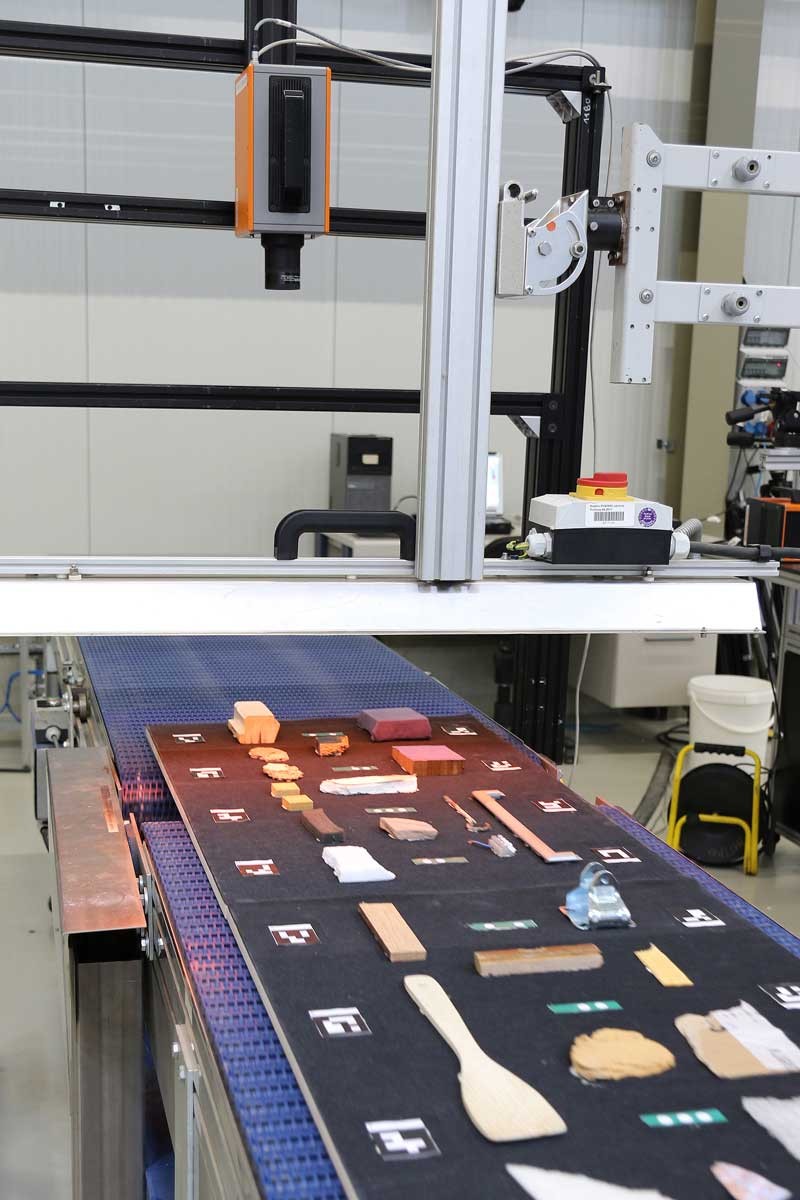Short description of the project
The ASKIVIT project (waste wood extraction from bulky waste using artificial intelligence and image processing in the VIS, IR and terahertz range) aims to improve and automate the sorting of bulky waste. The shredded bulky waste is transported on a conveyor belt and classified using various lighting and camera technologies to enable targeted ejection, for example via compressed air nozzles. Manual sorting is very time-consuming in view of the quantity and variety of material generated.
Project goals
Together with project partners, we are developing a solution for the automated sorting of bulky waste to recover wood, wood-based materials and non-ferrous metals on the basis of various image acquisition and processing methods as well as artificial intelligence. In this way, we are helping to ensure that a higher proportion of raw materials from bulky waste is recycled. This conserves resources and improves economic efficiency.
"With ASKIVIT, significantly more wood is detected in bulky waste, and with less manpower than was previously required," says Dr. Dovile Cibiraite-Lukenskiene from Fraunhofer ITWM. The disposal companies benefit from the cost-efficient sorting as well as the increased amount of recovered raw materials. In addition, the wood-based materials industry becomes less dependent on virgin wood, and the companies producing or processing materials also benefit from the broader raw material base and the increasing efficiency in recovered wood.
Contribution by Fraunhofer IOSB
In the field of visual inspection, Fraunhofer IOSB has been developing systems and equipment for sensor-based sorting for various tasks from the industry for over 20 years. In this project we take over the project coordination and contribute with hardware and expertise in the field of imaging in the visible and near-infrared range.
Furthermore, AI algorithms are developed together with the Institute for Industrial Information Technology (IIIT) in order to classify materials from bulky waste based on the sensor data, which is a basic requirement for sensor-based sorting.
To prove the practicality and marketability of the overall system, a field test is planned in a sorting company.
 Fraunhofer Institute of Optronics, System Technologies and Image Exploitation IOSB
Fraunhofer Institute of Optronics, System Technologies and Image Exploitation IOSB 
